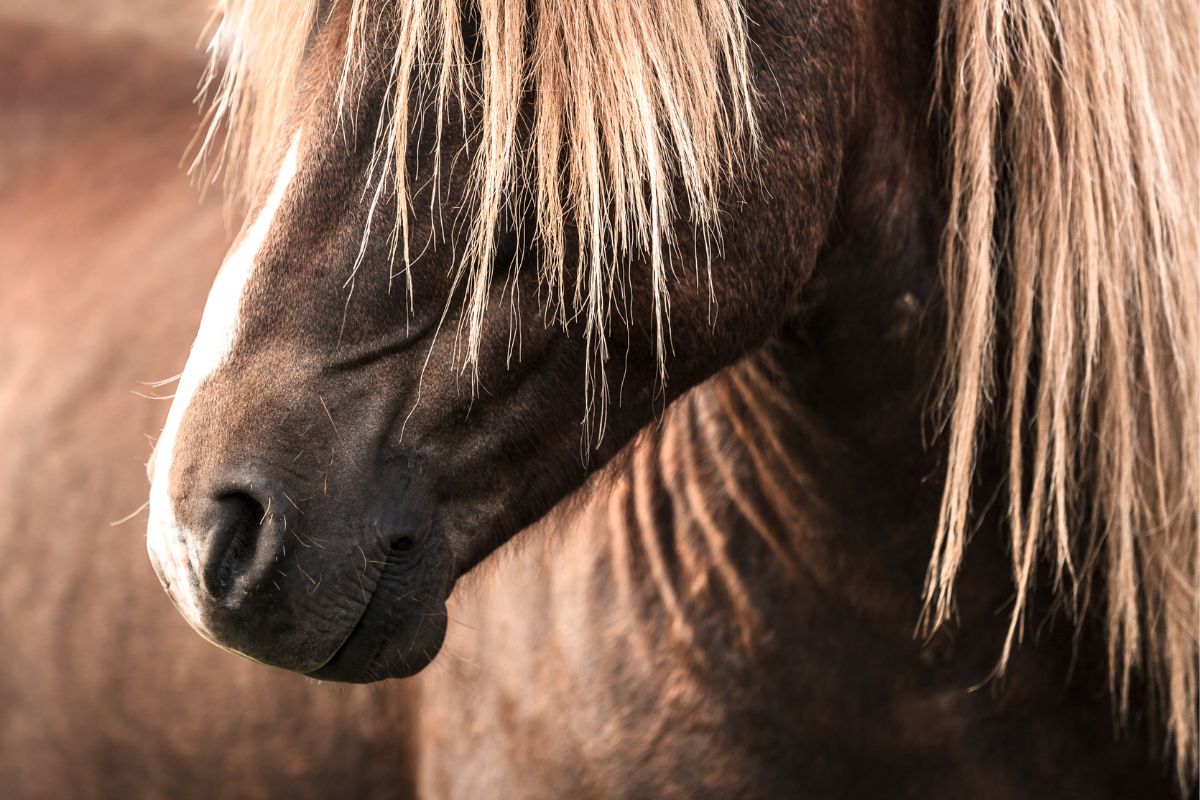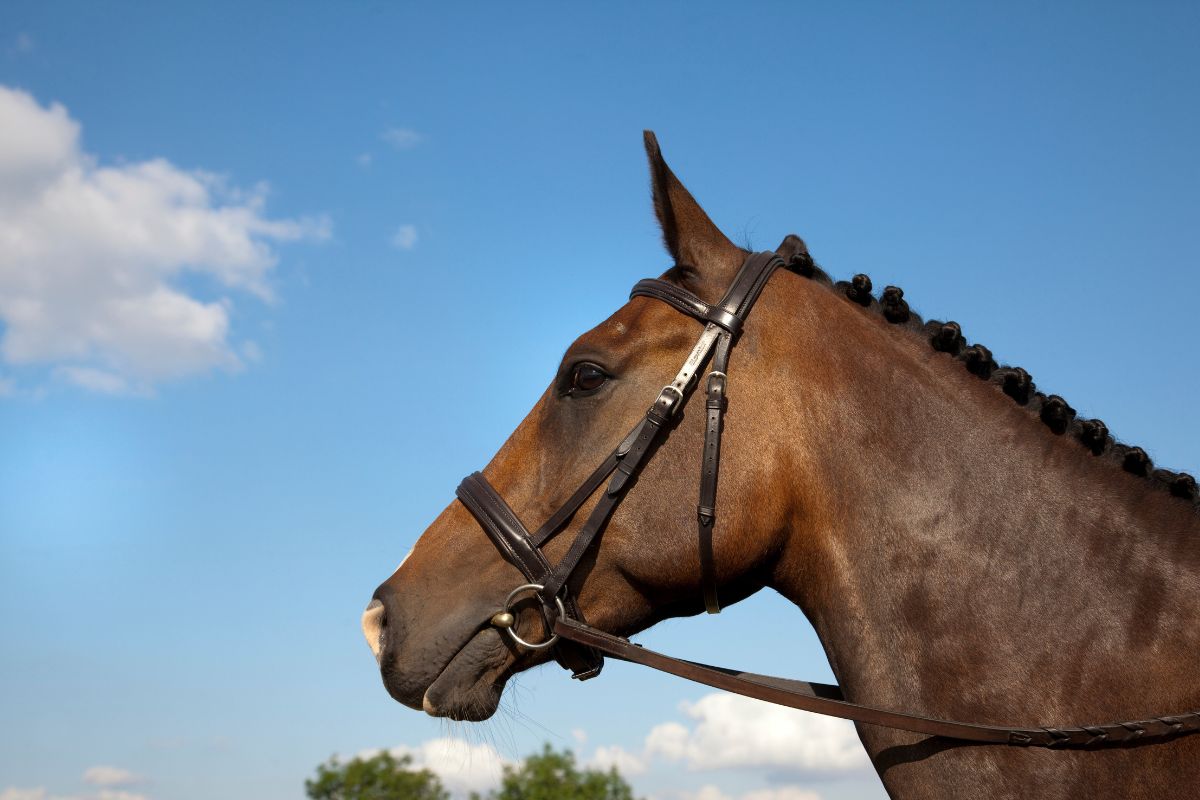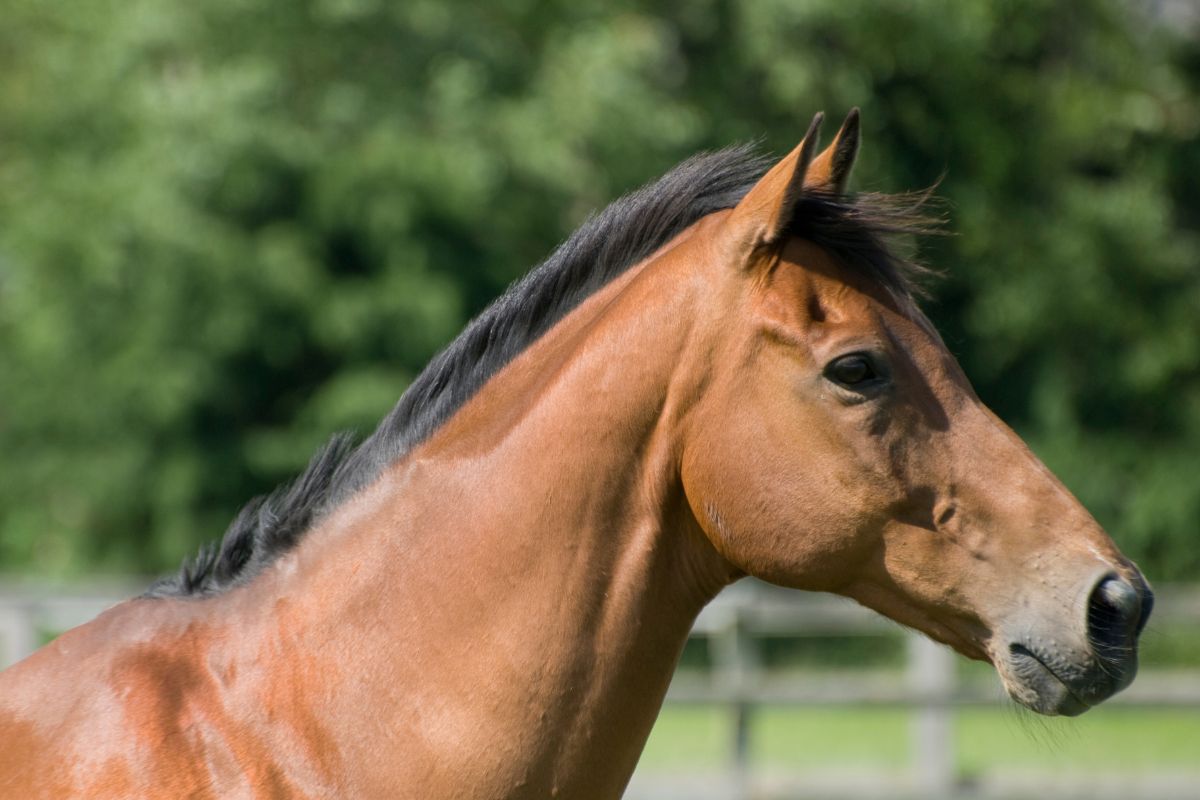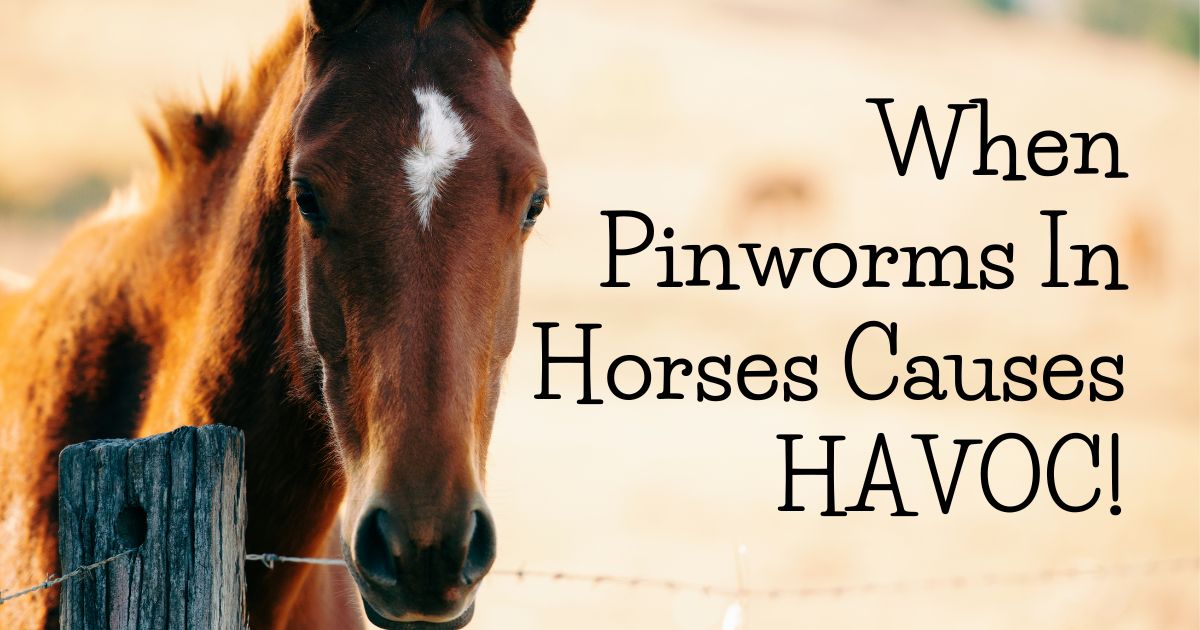What are Pinworms in Horses?
Pinworms in horses aren’t necessarily a pain in the butt for horse owners, but a pinworm infestation means that your horse’s health isn’t up to scratch.
The female pinworm crawls out of the horse’s rectum and deposits her pinworm eggs around the perineum with a sticky film. The combination of the pinworm activity and sticky egg deposits causes significant itching and irritation, leading to excessive tail base rubbing, restlessness, and irritability.

What Does the Pinworm Look Like Under the Microscope?
The pinworm Oxyuris equi is a parasite found in the large bowel of horses. The adult worm is gray, with the females growing to around 1 to 4 inches (3 to 10 cm), while the males are only about 0.4 inches (1 cm). The size of the adult worms means that owners and vets can sometimes detect pinworms in horses with the naked eye.
The egg of the pinworm under microscope investigation shows us its size and shape and quantifies the level of infection from a sellotape sample. The Oxyuris equi egg is ovoid and slightly asymmetrical, around 74 to 99 μm in length and 38 to 45 μm in width. The egg’s shell has a smooth surface interrupted by a transparent plug at one pole.
It is important to note that unlike the eggs of other equine worms, pinworm eggs do not occur in stool samples.
Pinworms in Horses – The Symptoms
The symptoms of an infection of pinworm in horses may be subclinical for the horse’s entire life. Pinworms spend most of their life cycle in the horse’s intestinal lumen without migrating and cause little to no physical damage or significant health concerns.
The predominant symptoms seen in pinworm infections include the following:
- Compulsive rubbing of the hind quarters on stable doors, yard poles, or trees.
- Intense itching of the tail base and rump.
- Biting and licking of the perianal region.
- Patches of hair loss, broken hair, and excoriations around the tail base and rump.
- Restlessness and irritability.
- Inflamed skin and secondary infections from chronic rubbing on harsh surfaces.
- Lackluster coat and condition loss from preoccupation with scratching.
Adult worms in stools after courses of deworming are also a symptom horse owners or stable staff may notice. Owners can check around the anus at night when the female worms may be active or check the hair on the perineum for a gelatinous substance that contains the eggs.
Similar symptoms can also occur with allergies or dermatitis, so if your horse does not improve after being dewormed, it is a good idea to consult with your vet about investigating other skin conditions.
How Vets Diagnose Equine Pinworms
Veterinarians will only investigate a pinworm infection if the clinical symptoms warrant it. Routine fecal flotations do not identify pinworm eggs because the females lay the eggs outside the host around the perineum.
A skin scrape or an adhesive tape test is the most reliable way to diagnose horse pinworms. The area around the anus is either scraped or taped and then examined under a microscope for the presence of pinworm eggs.

What to Do When Pinworms Manifest
Understanding the pinworm life cycle is essential to eradicate and effectively treating pinworms.
The pinworm life cycle is a direct life cycle, meaning the worms do not migrate through other organs and do not need an intermediate host. The whole life cycle takes five months compared to different worm life cycles that only take around three weeks to develop from an egg to an adult worm.
The larval stage occurs within the egg and takes three to five days. The third larval stage is the stage that infects the horse when licked off a surface or consumed during grazing. After ingestion, the larvae enter the small intestine to hatch.
The hatched larvae travel into the large intestine and enter the crypts of the cecum and colon. The larvae molt into a fourth larval stage. This process takes eight to ten days.
The adult stage occurs when the larvae molt into immature adults forty-five to sixty days after infection. The maturation process takes up to one hundred days before the adults reach a reproductive stage. The females will crawl out of the anus and lay their eggs after thirty days. The females die shortly after laying their eggs.
Steps to Avoid Pinworm Contamination
It is crucial to address an infected horse’s environment to avoid reinfection with pinworms after a horse receives treatment for pinworms.
Horses will scratch themselves on any available surface to alleviate the itching from pinworms. This behavior leads to the spread of pinworm eggs to paddocks, stables, yards, arenas, fence posts, gates, horse blankets, grooming equipment, feed, and water bins.
Good stable hygiene and regular cleaning of equipment and facilities will decrease the risk of environmental contamination, but pinworm infestations are tough to eradicate.
How to Perform the Sellotape Test at Home
A sellotape test is easy enough to do at home, and here are a few instructions on how to do it yourself and submit it to your local vet.
- The optimal time to collect a sample is in the morning before 9 o’clock, as pinworms that were active during the night would have laid their eggs and may still be present around the perineum.
- Take a piece of clear sellotape about 4 inches (10 cm) long and apply the sticky surface firmly onto a section of hairless skin around the anus.
- Carefully remove the tape and fold it in half so that one sticky side adheres to the other sticky side.
- Clearly label a sample bag, place it inside, and deliver it to your vet for microscopic examination.
How to Get Rid of Pinworms in Horses
The key to clearing an environment of pinworms is good stable hygiene. An excellent veterinary disinfectant that includes Chlorocresol, like Interkokask, helps to destroy eggs spread by itchy horses.
A vet must determine pinworms in horses’ treatment protocols. After a few weeks, the vet will start with basic deworming medication and then re-evaluate the horse. Following the vet’s dosage recommendation and giving an accurate weight is imperative because underdosing will not clear the horse of its pinworm infection.
If the infection remains a problem, then there may be a reason to suspect that the worms are resistant to the first line of defense drugs or that the horse did not receive an adequate dose. Vets will then opt for a different drug class or a more novel drug to improve dewormer efficacy.
Which Wormer Kills Pinworms in Horses?
Dewormers that effectively kill over ninety percent of adult pinworms in horses include ivermectin and pyrantel pamoate.
Ivermectin doses used are the label dose of 91 micrograms of ivermectin per lb (200 mcg/kg) body weight, and pyrantel needs to be given at double the dose recommended for tapeworm treatment – 170.1 ounces pyrantel base per lb (6 mg per 0.45 kg). A five-day course of Fenbendazole is also an effective treatment option.
Is There a Natural Remedy for Pinworms in Horses?
There are no proven natural remedies to treat pinworms in horses. Still, there are husbandry tricks to try and decrease the burden of pinworm symptoms until your horse receives an effective dewormer.
Owners can wash the perianal area with water in the mornings to remove the eggs and potential residual female worms before they cause any itching. Follow the wash with a light layer of vaseline or petroleum jelly to alleviate the itch and create a barrier between the worms and your horse’s skin.

Summary
Pinworms are challenging to eliminate from a stable yard due to their long life cycle, efficient egg dispersal, and possible resistance to some anthelmintics. Good equine husbandry resolves to maintain proper stable hygiene and close monitoring of horses.
As the saying goes – an ounce of prevention is worth a pound of cure. Early detection is crucial to stop pinworms from becoming stable yard fixtures by minimizing worm egg dissemination.
